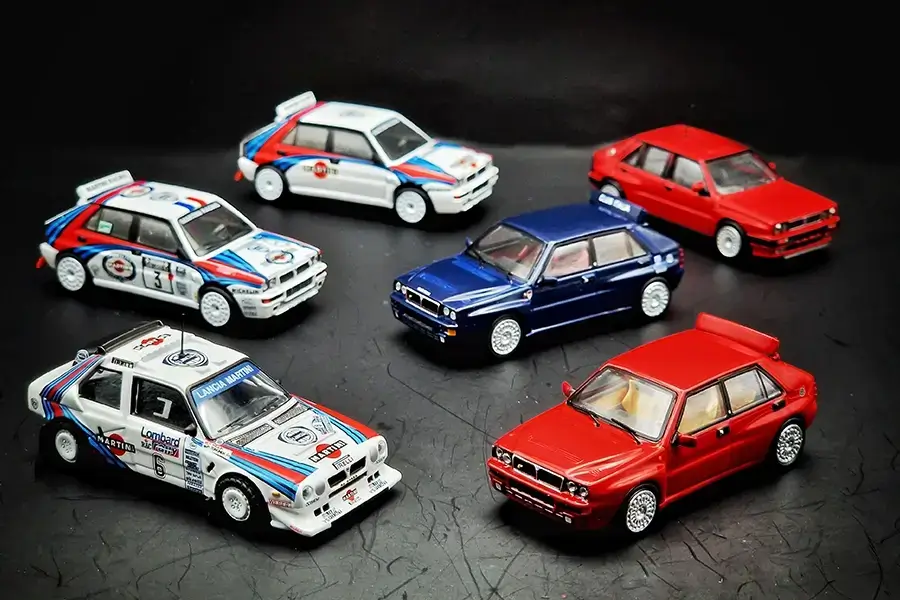
CMS, MiniGT, Tarmacworks, Kyosho Lancia Delta – A Racing Myth FEATURETTE
How it all started...
The Lancia Delta S4 is one of the rare rally cars of the so-called Group B - and was even one of its most sophisticated examples. Although the era of Group B was extremely short, from 1982 to 1986, these four years were enough to anchor it forever in the annals of rallying. The reason is simple: the federations relaxed the regulations, suddenly almost everything was technically possible - and instead of 400 production cars, only 200 race cars were needed to be admitted to the WRC. For an evolution stage, i.e. an improvement of the car, you even needed only 20 production kits.
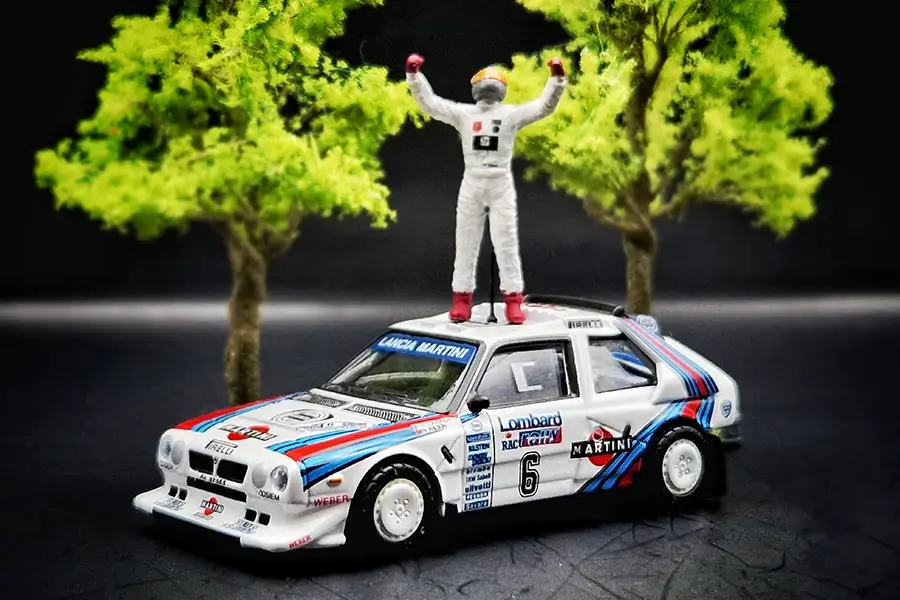
This led to an unprecedented arms race, with manufacturers outdoing each other with ever more extreme creations that produced around 500 hp and thus operated at the performance level of Formula 1 cars - The only difference was that the drivers drove them over unpaved forest roads and gravel serpentines in the mountains, where there were neither crash barriers nor run-off zones. Lancia was one of the first manufacturers to take advantage of the lax regulations of the new Group B and put the rear-wheel-drive 037 on its wheels. Although it was quite successful and won the world championship in 1983, its basic concept was already outdated and the future belonged to four-wheel drive.
Unlike the production Delta (more on that later), the engine did not sit at the front, but in the middle, as it did in the Peugeot 205 Turbo 16 and MG Metro 6R4, one of Lancia's main competitors. The shell of the S4, which was intended to keep up the appearance of series production and spanned a lattice tube construction, was made of then futuristic materials such as kevlar and carbon; as a result, the car weighed only 890 kilograms. The low weight, combined with the 1.8-litre four-cylinder engine, made the Delta an elemental force. The developers in Turin pushed the engine to the limit and used double forced induction and a compressor to skilfully avoid the turbo lag. In the end, the result was not only 500 hp, but also two and a half seconds from a standstill to 100 km/h - on loose surfaces.
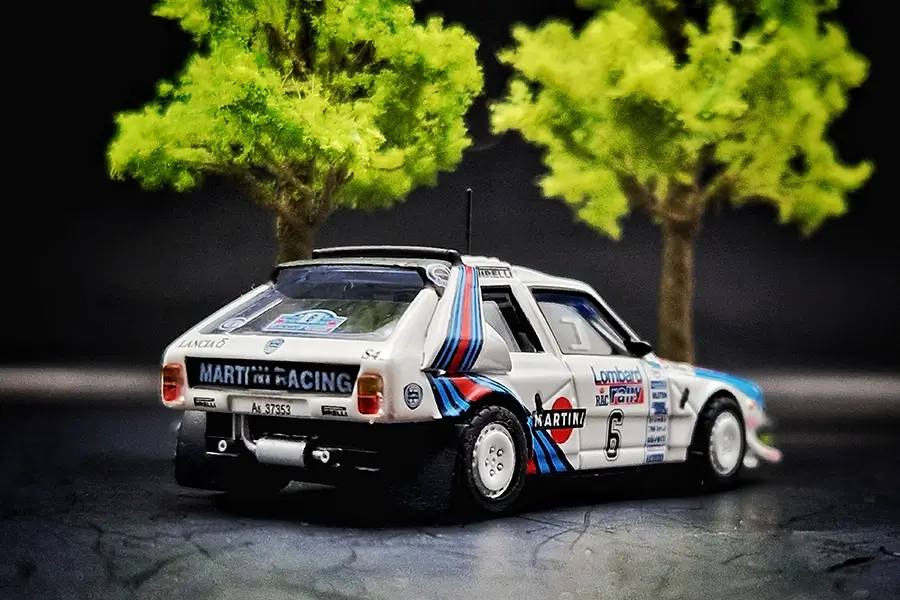
A new era!
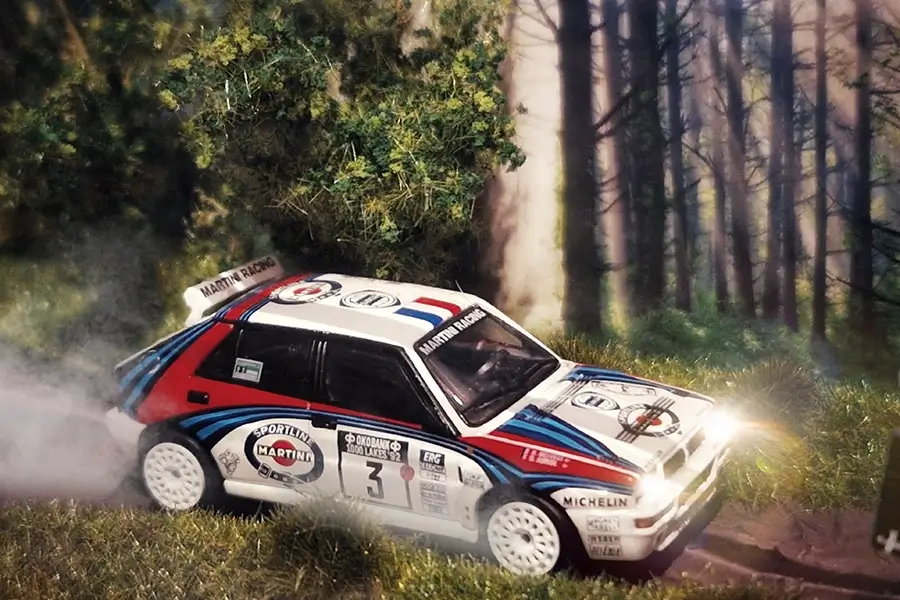
In 1988, the Delta HF Integrale was launched, followed by the 16V variant in 1989. The last Delta HF of the winning family came in 1991, the so-called Delta HF Integrale 16V Evoluzione. MiniGT already published the test variant and racing variant of the 1992 Integrale Evo in the familiar Martini design in 1.64 scale. Tarmacworks and Kyosho themselves produced the street versions of the HF Integrale to cover the Delta family as broadly as possible.
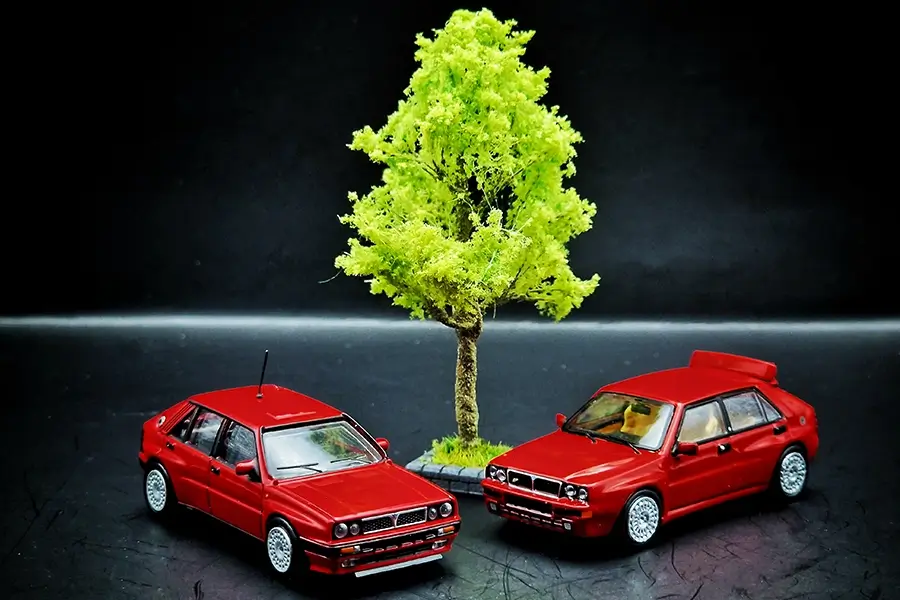
Elitist and exclusive!
Fresh for 2023, Tarmacworks released the Club Italia special model, which is very close to the original. All lifesized 15 Club Italia cars produced at that time were delivered in Lord Blue livery. They also featured the 'Club Italia' badge on the rear spoiler and bonnet edge, red leather Recaro seats and the unique ignition button to start the car. The name of each Club Italia owner was engraved on a plaque on the centre console with a carbon frame. Thus the car usually had only one previous ownerer which makes it the most exclusive Lancia Delta in history.
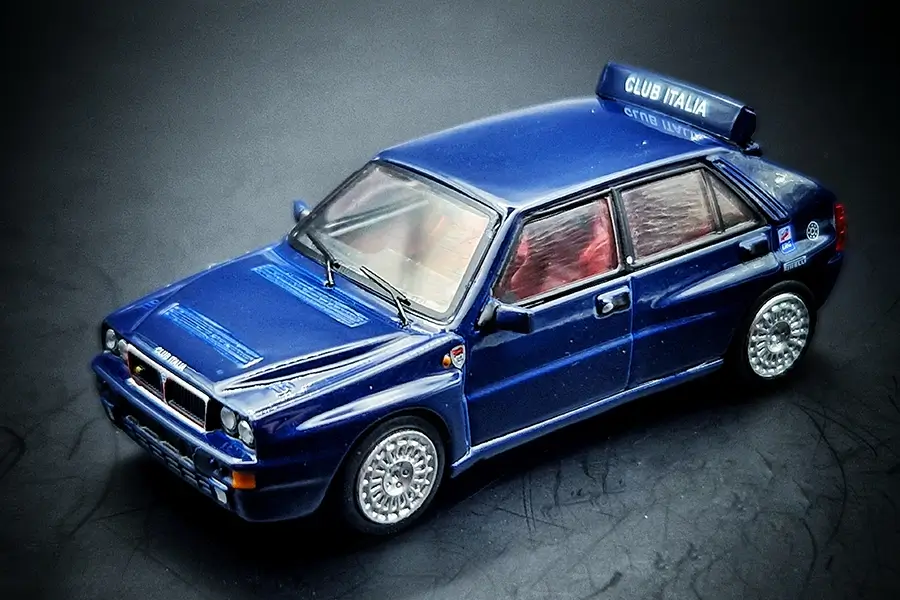
The Lancia HF family has once again left an indelible mark on motorsport history, with the positive commercial impact closely linked to its sporting successes. The six-year dominance of the four-wheel drive Delta HF in the World Rally Championship, for example, enabled the Delta to extend its life cycle into 1994. Fifteen years in which a true myth was created.


